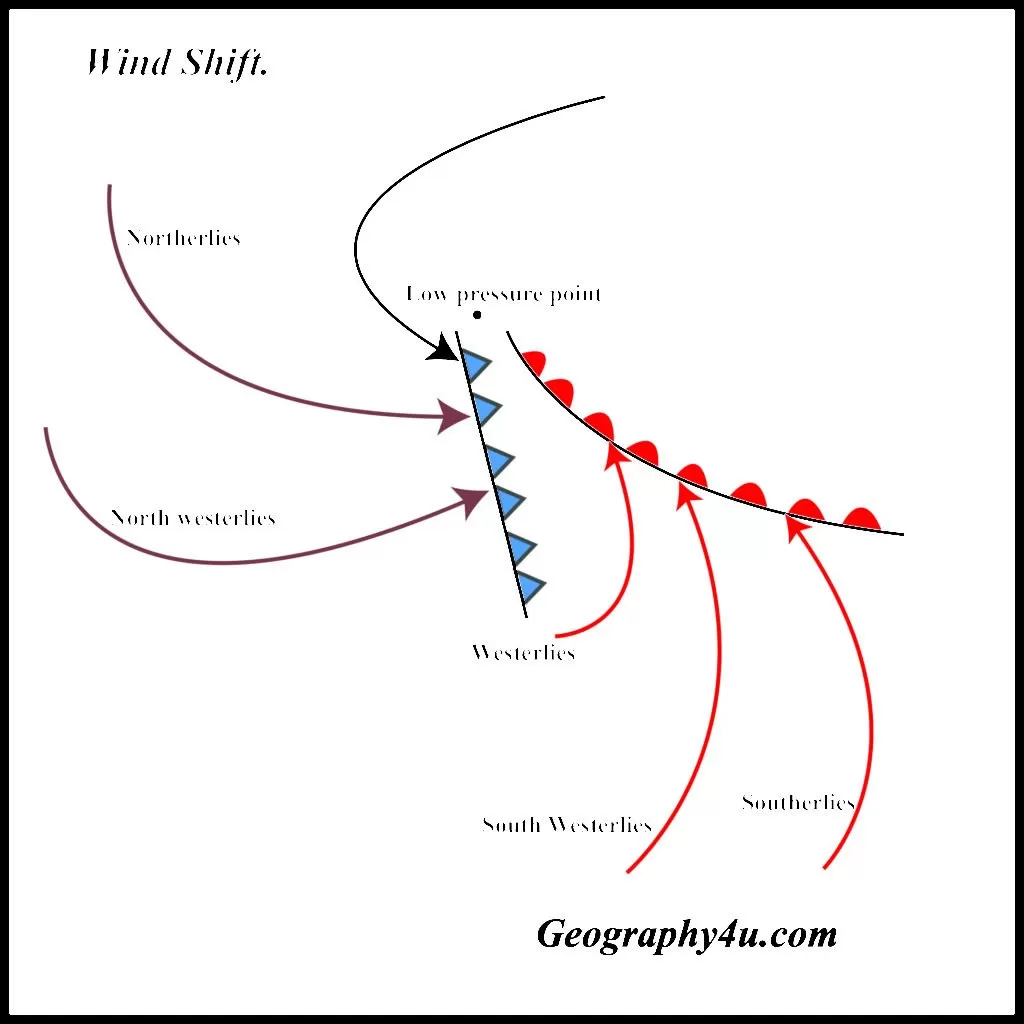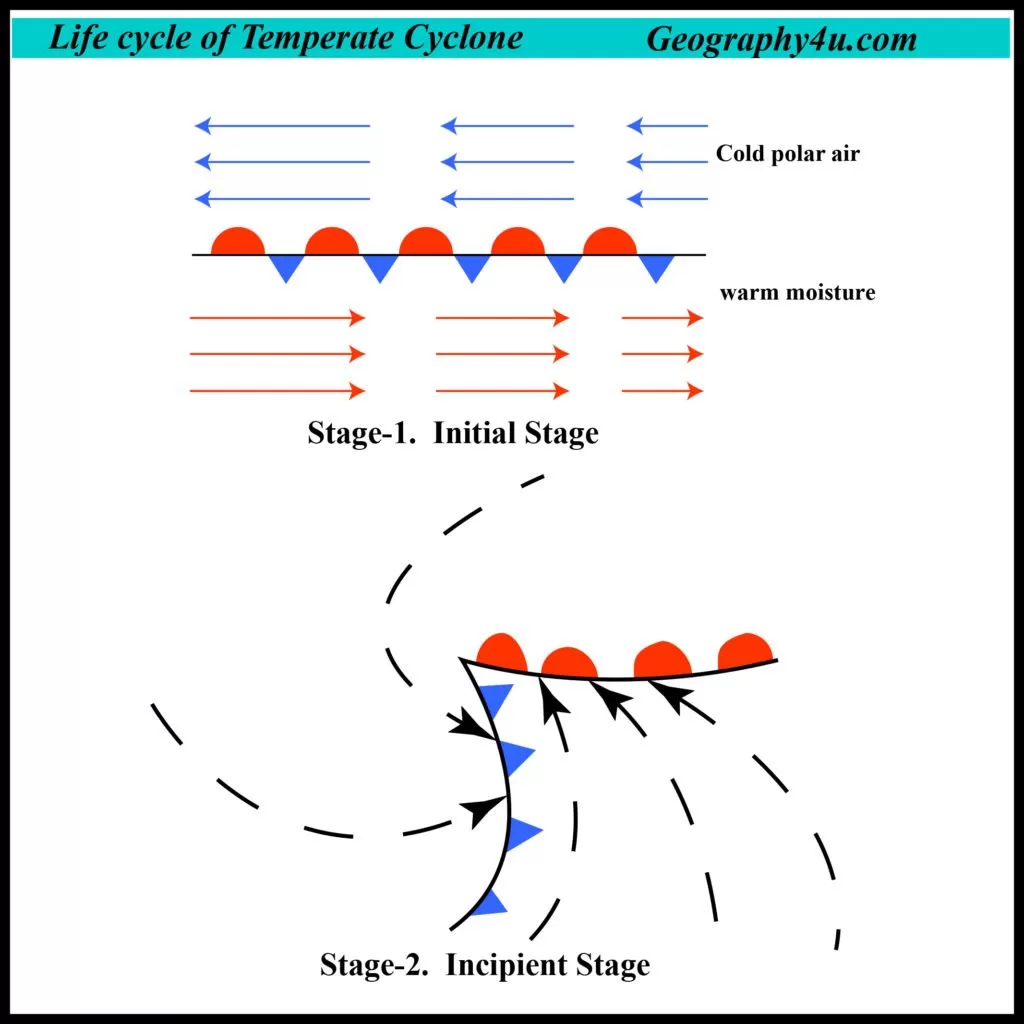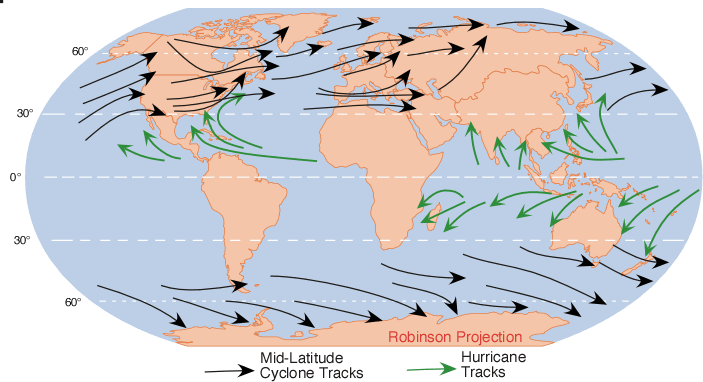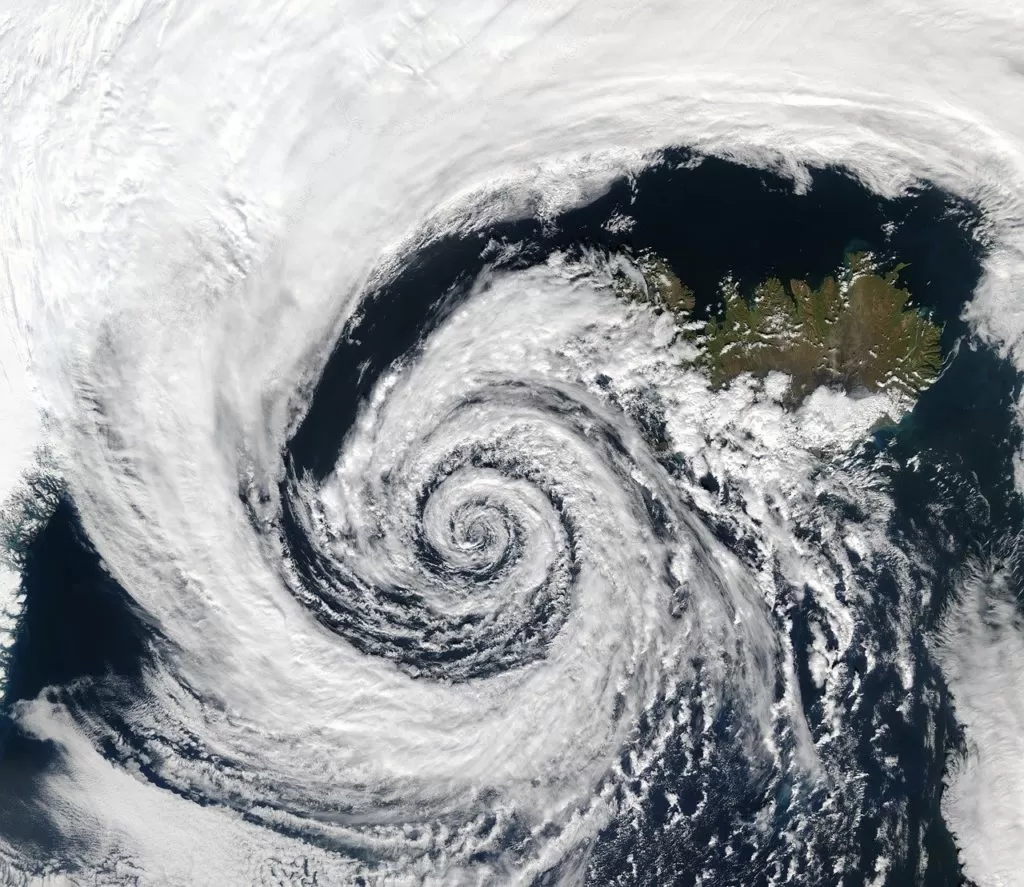Table of Contents
Introduction
In this article, I will discuss what are temperate cyclones? How they affect the climate and weather, their classification, and other phenomena related to temperate cyclones. Also, the formation of temperate cyclones in oceans. But before we proceed further, we shall know what are cyclones in general.
Cyclones
Cyclones are low-pressure centers, surrounded by closed isobars of increasing pressure. These isobars are circular or elliptical in shape. Cyclones are the result of thermodynamic modifications of primary circulation. They are categorized under Meso or Secondary circulation. The air moves anticlockwise in the northern hemisphere and clockwise in the southern hemisphere.
The atmospheric phenomena create the condition for the development of cyclonic conditions. The moving cyclones play a vital role in the complex process of heat exchange between latitudinal zones.
How Cyclones are classified?
On the basis of their geographical location, they are classified as temperate cyclones and tropical cyclones. On the basis of their nature, they are classified as cold-core cyclones and warm-core cyclones.
What are temperate cyclones and how they are formed?
Temperate cyclones are referred to as mid-latitude depression or extra-tropical cyclones. They are known as extratropical cyclones or frontal cyclones. They are developed in the region extending between 35⁰-65⁰ latitude in both the hemispheres. Temperate cyclones are formed due to convergence of two contrasting air masses i.e. light tropical air masses and dense polar air masses. The polar fronts are responsible for the origin and development of temperate cyclones.
What are the characteristics of temperate cyclones?
The following are the characteristics of Temperate cyclones
Location: They are formed between 35⁰ to 65⁰ in both the hemispheres. This is a result of interaction between cold polar mass and warm tropical air mass in the westerly wind belt. These cyclones are more pronounced in the northern hemisphere due to greater temperature contrast.
Velocity: As the pressure gradient is smaller, the velocity is moderate around 30 to 40 km per hour.
Frequency: As the temperate cyclones are formed due to front formation, they occur throughout the year. Therefore, they are not confined to any particular season. However, their frequency is more in winter than summer.
Area covered by Temperate cyclones: The temperate cyclones develop over a large area occupying more than 1500-2000km in diameter. Vertically, they may reach up to Tropopause.
Air Pressure: As the isobars are widespread in these cyclones, the pressure gradient is gentle. Mainly, the isobaric difference varies from 10 to 15 Mb.
Formation: The formation of the temperate cyclone is predominantly controlled and dominated by the formation of the fronts. Thermal contrast of the two types of air masses is the genesis for the development of the low-pressure centre. This led to the creation of temperate or extratropical cyclone.
The direction of Movement of the temperate cyclone: The temperate cyclones are developed in the mid-latitudes where the westerlies are prominent, the direction is from west to east. In the northern hemisphere, Temperate cyclones move from southwest to northeast. In the southern hemisphere, they follow northwest to southeast direction.
Wind pattern in temperate cyclone (Northern Hemisphere)

What is the life cycle of temperate cyclones?
The life cycle of temperate cyclone consists of four stages.
- The initial stage.
- The incipient stage.
- The mature stage.
- The occlusion stage.
The Initial stage
In this stage, the polar and the tropical air masses blow parallel to the front. The cold air mass to the north of the front blow from east to west. The warm air mass to the south of the front blow west to east. There is a complete absence of wind shift and the weather is fine settled.
The Incipient stage
In this stage, a wave has formed on the front. Cold air turns in the south direction and warm air in the north direction. Each air mass encroaches into the domain of the other. A cyclonic circulation is initiated around a low center at the apex of the wave. The new depression developing at the crest of the wave is called the “nascent cyclone”. This process is called cyclogenesis.

The mature stage
In this stage the intensity of cyclone increases. The curvature and amplitude of the wave undergo a marked increase. Now the cyclone is fully developed. Since the position of the cold front advances faster than the warm front, the warm sector becomes progressively narrower.
The occlusion stage
This is the final stage where the advancing cold front ultimately overtakes the warm front. And this results in the formation of an occluded front. Occlusion starts first near the apex of the wave where the warm front is closest to the cold front. Ultimately, the two cold air masses mix across the front and die out. The occlusion is of two types i.e. cold front occlusion and warm front occlusion. The life span of a single frontal cyclone is 5 to 7 days.

Why do temperate cyclones move from west to east?
The general direction of movement of temperate cyclones is from west to east. There is no definite path which most of the cyclones follow.
The heavy concentration of storm are traced in the vicinity of the Aleutian and Icelandic lows followed by the middle-latitude cyclones. There is a definite seasonal shifting of the paths of cyclones. The cyclones invariably move towards higher latitudes whereas, the anticyclones mainly travel equatorward.
Origin and development of temperate cyclones?
The exact mechanism responsible for the origin of a temperate cyclone is unknown. In the year 1918, two Norwegian meteorologists Vilhelm Bjerknes and J.Bjerknes postulated the Polar front theory of temperate cyclones.
- According to the polar front theory, cyclonic disturbances form along a front where polar and tropical air masses with contrasting physical properties are moving parallel to it in opposite directions. Thus, cyclone formation occurs where the frontal surface is distorted into a wave-shaped discontinuity.
- The formation of a wave is indicative of thermal contrast.
- There are several factors which may produce an unstable wave. These factors are mountains, temperature contrast or some nearby disturbances.
- As the cold polar air and warm air is deflected toward equator and pole respectively, a cyclone forming wave is formed along the front. The wave thus formed is divided into two parts.
- The eastern part of the wave is called the warm front. The western portion of the discontinuity where cold polar air is replacing the warm air is called a cold front.
- The curbing motion added by the Coriolis force increases the amplitude of the wave.
- Since the cold front advances at a faster rate than the warm front, it overtakes the warm front. Now the process of occlusion starts and the cold air behind the cold front meets cold air ahead of the warm front. The onset of the process of occlusion brings the storm close to its death.
Convergence of Warm and Cold Air Masses

Different Stages of the Development of Temperate Cyclone

What is the size and shape of temperate cyclones?
There is a huge variation in the shape and size of temperate cyclones. No temperate cyclone is exactly like any other. The isobars formed in these cyclones are almost circular or elliptical. These isobars are characterized by low pressure in their centre. The diameter of these cyclones may vary from 160 km to 3200 km. Most of these cyclones have diameters measuring 300 to 1500 km. The estimated area covered by an average cyclone is about 1.6 million sq. km. The vertical extent of an average-sized cyclone is estimated to be 10 to 12 km.
What is the direction of Temperate cyclones?
Temperate cyclones move in easterly direction under the influence of westerly winds. At the centre for converging and rising air, these moving cyclones produce clouds and, precipitation. These cyclones control the weather conditions in the middle latitudes.
World pattern of temperate cyclone
The temperate cyclone develops in the extra-tropical areas. There are important zones for the development of temperate cyclone-
- Atlantic- Arctic front and cyclone.
- North-America- Polar front and cyclone.
- Mediterranean front and cyclone.
- Extra-tropical cyclone in Southern Hemisphere.
Principal Areas of Temperate Cyclones


